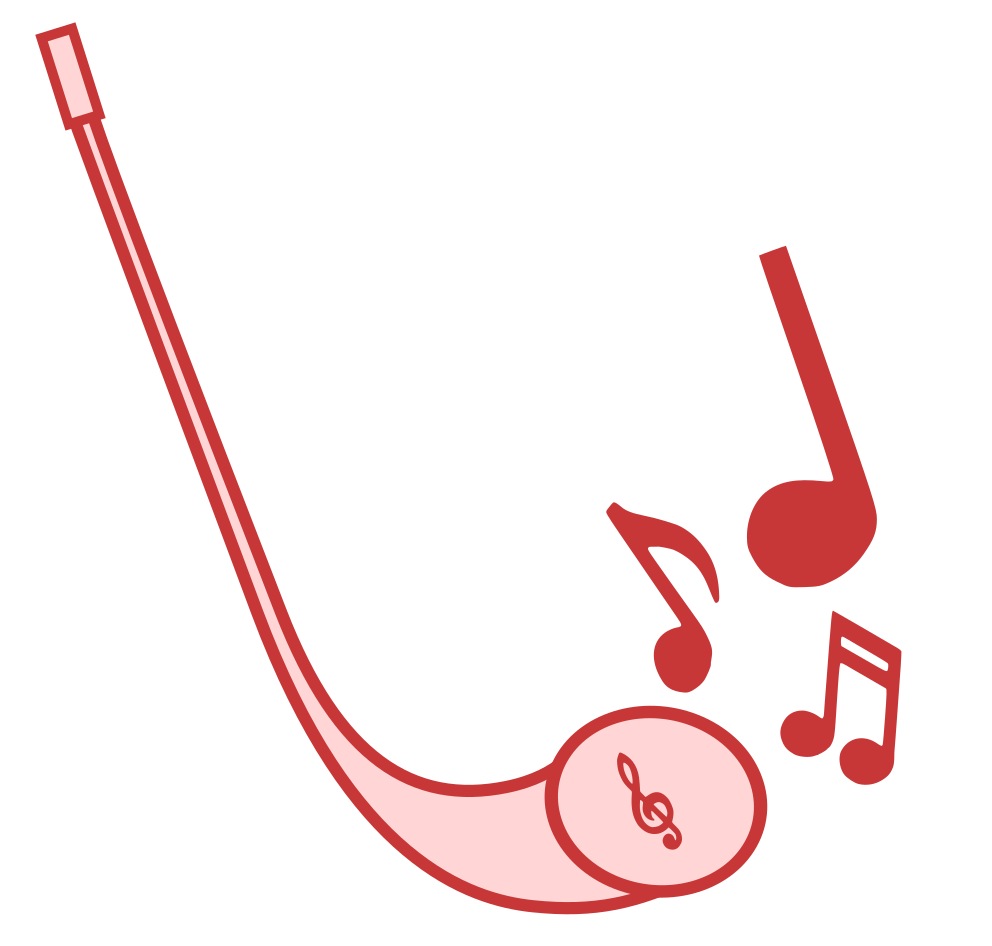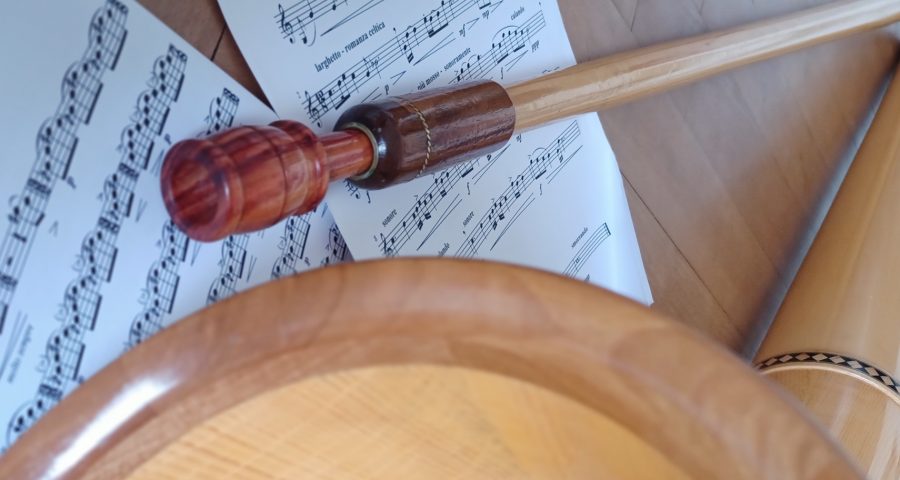No theory this time, but an extension of your technical skills.
 Smoothen Your Range
Smoothen Your Range
Objective: Flexibility accross the registers.
Many alphorn players struggle with keeping a stable embouchure accross high and low registers. At some pitch, typically around C5, they have to re-form the embouchure. I know the problem from my own experience. Specific training helps. In the workout for Alphorn and Büchel you will find suitable exercises.
- Runs, #1.1 – 1.5: Target the range to the area where you need to re-form your embouchure. Start with a short segment above and below the critical pitch. Practice legato (slur all the notes). Plus the usual advice: start slowly, with precise meter, repeat several times and fluently, then expand up and down. Finally, increase speed in small increments.
- Glissandi, #1.13: as a more advanced version of runs. Before trying the glissando you must master the corresponding run. When you play a glissando, the key is to focus on the final note – starting from the initial note, you glide towards that final note, with that final note already in your head. If you make mistakes on the way, slow down (i.e. go back to practicing the run)!
- Wide slurs, #4.1-4.6. Again, chose a range that goes accross the critical pitch. Focus on cristal-clear slurs and immaculate timing.
- Fast switching between registers. Take a short sequence of notes (e.g. from #7.2) and play them alternately clearly above and clearly below the critical point. It could then look like this:

If you struggle with playing accross high and low registers, you should work on the issue every day. Runs and glissandi are also a great warm-up technique; so, you might solve two issues at once.
 Lip trill
Lip trill
Objective: Maximum efficiency.
The lip trill is so called because the lips do nothing. The tongue alone binds back and forth between two notes in rapid succession, while the lips stoically hold their tension. Here is a nice example of using the lip trill:

Expect mastering the lip trill to take about two years of regular practice. Whereby: there is no minimum speed from which you “master” or don’t. Here are the recommended training methods:
- Dry run with vowels: This is the purest form of tongue efficiency training. Start by placing the tip of your tongue on the bottom row of your teeth. Pronounce the vowel /ʌ/ (this is phonetic writing and is pronounced as in “cut”, see here) . Then slide slowly to the next vowel /æ/ (“cat”, here). Make sure, your volume und pitch remain unchanged; nothing should move except the tongue – check that in the mirror. Once you master this, move on to /ɛ/ (“bet”, here), /e/ (“lake”, here) and /ɪ/ (“bit”, here). If you work daily on this exercise, you will – over a few months – greatly improve the control of your tongue. Once the movement is in place, you can increase the speed. From there to the lip trill is a snap.
- Whistle: An alternative to the previous dry run. Compared to buzzing, whistling is socially more acceptable.
- Exercises directly on the alphorn: In Workout for Alphorn and Büchel you will find specific exercises for the lip trill. Several alphorn teachers recommended #32 to me, but I found #31 to work better. In any case, efficiency is also important here: regularly check in the mirror whether the facial muscles are stable.
Below a video by Alyssa Widener; it gives you a few additional exercises and shows how young horn players have to practice hard for the lip trill (maybe because the television is running during practice?):
 Lip Bending
Lip Bending
Objective: Improve intonation and sound quality.
The term “lip bending” describes a technique where you try to move the intonation away from its normal pitch without slipping into the next note. So, it’s something like a the whammy bar on the alphorn. Here’s how it’s done:
- It is easier to lip bend in the low register (because that’s where the distance between the harmonics is greatest) and from the central pitch of a note downward. For example, start with the G3 or the C4 and try to shift the intonation down slightly with your tongue and lips.
- Add a tuner (or a tuner app) – it shows you exactly where you are and supports you in ear training.
- Start with small deviations and return to pure tone. Try to get a little further down in each cycle.
- Make the cycles slow. The downward bend should take at least three seconds and be as linear as possible. Use a metronome if you can.
- About halfway to the next lower note, the tone begins to flutter. Try to stay on this border without slipping, then return to the starting sound.
Once you have mastered this basic form, you can try to use lip bending as an expressive element while playing. You can also refine the technique further by bending upward or to achieve a continuous slur between two harmonics.
 Vibrato
Vibrato
Objective: Master the classical effect of vibrato.
Vibrato is like a fine spice: used sparingly and in the right place, it achieves a beguiling effect (others compare vibrato to mascara). Vibrato has no place in alphorn chorales; vibrato is never in sync. Loud, hunting horn-like passages also do not go well with vibrato. But the long-drawn-out tone at the most delicate point in the solo gains even more sublime quality with a fine, barely audible vibrato.
With vibrato, you change the intonation and/or timbre of the tone at a relatively high frequency. There are various technical options for this:
- With the diaphragm: often mentioned, but I haven’t met anyone who actually uses it
- With the tongue: analogous to the lip trill, but with much finer movements. The easiest way is to use vowels like “ujehujehujeh” – my recommendation #1.
- With your hands: Trumpeters in particular like to “shake” their instrument; the vibrato then arises from rhythmic changes in the pressure of the lips. For the alphorn, this method is difficult to apply for obvious physical reasons.
- With the lips: The challenge here is to find a muscle that is not simultaneously engaged in the embouchure. You can use the lower jaw for this – my recommendation #2.
Well then go for it. Try the two recommendations, decide on one and apply it to a suitable piece or in free improvisation. Also listen carefully to recorded alphorn tunes – where do they use vibrato and what is the effect? Try to develop a feeling for when the vibrato has spiced up the performance and when it has turned it into an uneadible pudding.
And a hint from my teacher Matthias Kofmehl: Vibrato works especially well if you first hold the note straight for a moment and only then go into vibrato.
 Double Tongue
Double Tongue
Objective: A technical element for rhythmic play.
When you apply the “double tongue” your tongue alternately triggers the note by hitting the teeth and the palate. See what’s going on in your mouth in the video of chapter 4 from 6:29 (slow) and 6:54 (fast). The easiest way to achieve this movement of the tongue is by pronouncing the syllables “ta-ka ta-ka ta-ka….”. To practice the double tongue, start with a middle pitch (e.g. G4); then practice using the metronome on 1/8th, 1/16th, or 1/32nd notes. The ultimate goal here is speed – but, as always, you get there only by starting slow and clean!

You find other exercises in Workout for Alphorn and Büchel (#8 & 9):

The triple tongue takes you one step further. You now make triplets: “ta-ka-ta ta-ka-ta ta-ka-ta”. See workout exercises #10 & 11. Training with double and triple tongue improves your tongue control, the stability of your embouchure and endurance. Of course you can also train without an instrument or try other rhythmic patterns (e.g. a Tresillo).
Below a video with Bobby Spellman explaining double and triple tonguing on the jazz trumpet. He uses triple tonguing as rhythmic element in improvisation.
